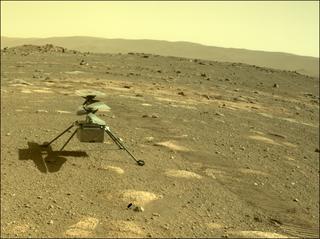
WEST LAFAYETTE – Purdue’s best in Mars, planetary research.
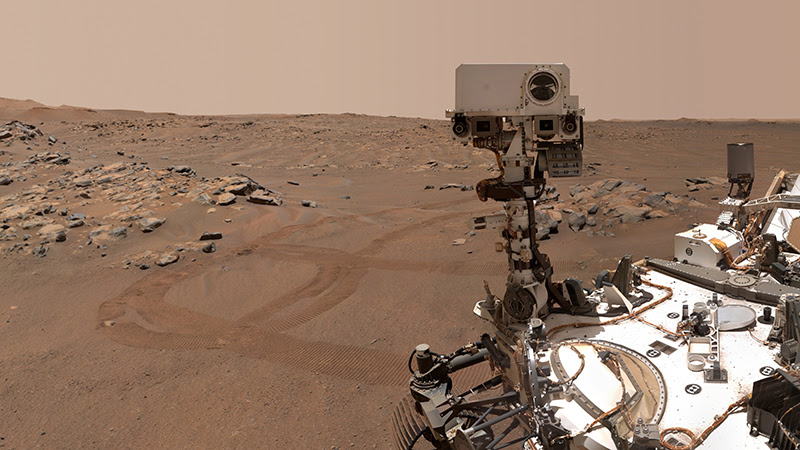
The Mars rover Perseverance takes a “selfie” on the 198th Martian day of its mission on the red planet. Purdue planetary scientists Briony Horgan and Roger Wiens are both part of the team behind aspects of the SUV-sized Mars rover and its ongoing mission. (Photo courtesy of NASA/JPL-Caltech/MSSS) Download image
What is the importance of the red planet, Earth’s neighbor more than 150 million miles away? Looking for the latest in Mars research? What can another planet’s history tell us about Earth’s future? A variety of Purdue’s leadership, expertise, and innovation in Mars and planetary research is highlighted in this roundup.
Robotic exploration on other planets
Roger Wiens, a professor of earth, atmospheric, and planetary sciences at Purdue, is an expert in Mars robotics technology. Wiens explains the economic benefits of robotic exploration of Mars and how the technological advances achieved for Mars can be used back on Earth.
Year two is underway as the Mars rover reaches the ancient river delta
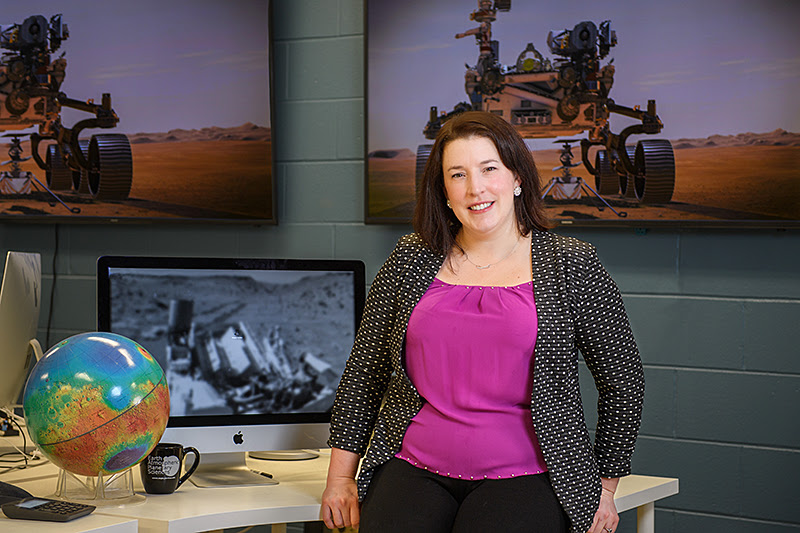
Briony Horgan. (Purdue University photo/Rebecca McElhoe) Download image
- After a year-long march across Mars’ landscape, the Perseverance rover recently reached one of its main mission goals.
- Briony Horgan, associate professor of planetary science, led the efforts to designate Jezero Crater for the rover’s landing and now is a long-term planner as part of the science leadership for NASA’s rover.
- Horgan expects to spend most of the coming year searching for signs of ancient life, such as organic material and signs of microbes.
Bringing humanity’s eyes, ears, and nose to Mars
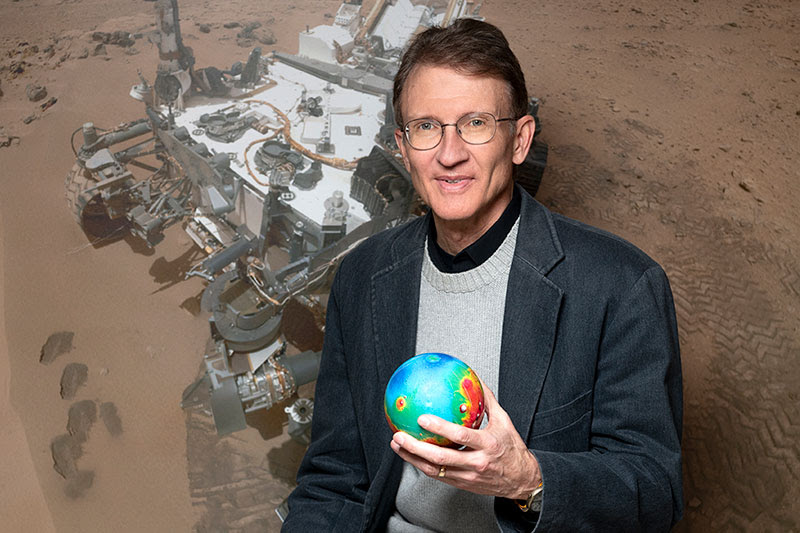
Roger Wiens. (Purdue University photo/John Underwood) Download image
- Roger Wiens was instrumental in outfitting Mars rovers’ Curiosity and Perseverance with tools that help quantify the environment of the Martian surface, including the ChemCam and the SuperCam.
- Sound recordings on Mars taken by SuperCam help scientists analyze and understand the planet’s atmosphere and rock composition and check on the health of the rover itself.
- Wiens was also working on remote spacecraft to study the sun.
When worlds collide: Studying impact craters to uncover the secrets of the solar system
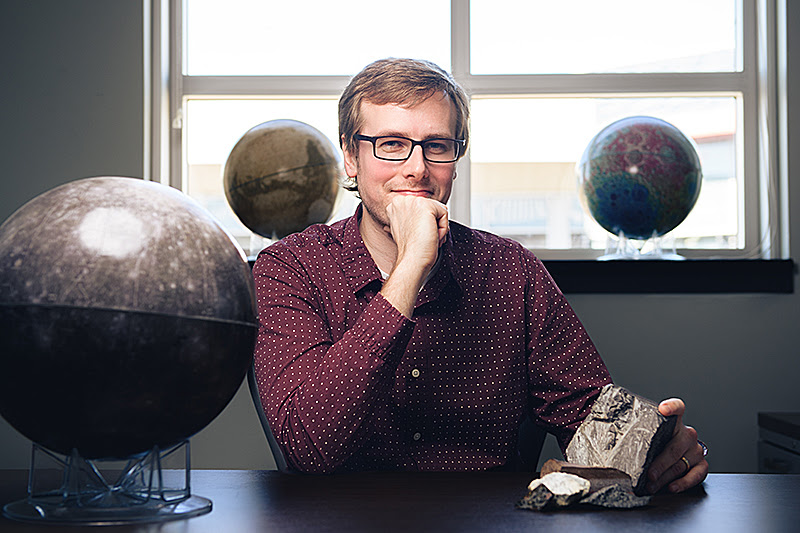
Brandon Johnson. (Purdue University photo/Rebecca McElhoe) Download image
- Brandon Johnson, an associate professor in the Department of Earth, Atmospheric, and Planetary Sciences at Purdue, is an expert on craters, impacts, and planetary science, along with meteors, asteroids, moons, and everything else in the solar system that can go smash.
- Impact craters help scientists decipher the ancient history and current status of planetary bodies – including insights into which moons and planets might have molten cores and plate tectonics or liquid oceans.
- Details in impact craters on Earth and the moon are giving scientists clues into the history and evolution of both.
Samples of ancient Mars rock could show when the planet was habitable
Briony Horgan is looking to Mars’ rocks to determine the red planet’s past, including when it may have been habitable. She talks about the search for evidence of microbial life in rock samples, which will be the focus in the second year of the Perseverance rover mission as it studies an ancient river delta.
Planetary scientist reflects on her passion for studying Mars geology, landscape
- Through the Mars rover mission, Briony Horgan is fulfilling her love for exploring to the extreme by seeing undisturbed portions of the red planet no one has laid eyes on before.
- Horgan told the This is Purdue podcast that rocks were an early interest for her, but a fascination with space made her realize she wasn’t confined to studying Earth’s terrain.
- Using Mastcam-Z, the rover’s special dual-lens camera developed by the team she was on, Horgan is analyzing images to determine the mineralogy of the rocks on Mars.
Purdue planetary research in the news:
Divide and conquer: Mars rovers to be superseded by swarms of two-wheeled robots
Mars Daily
In its visit to Psyche, NASA hopes to glimpse the center of the Earth
Popular Science
New clues reveal the devastation the day the dinosaurs died
National Geographic Magazine
NASA’s Perseverance Rover Is Hunting for Ancient Life
Popular Mechanics
A year after landing on Mars, Perseverance rover sets sights on intriguing new target
CNN
NASA’s Perseverance rover prepares for its longest Mars drive yet
Axios
About Purdue University
Purdue University is a top public research institution developing practical solutions to today’s toughest challenges. Ranked in each of the last four years as one of the 10 Most Innovative universities in the United States by U.S. News & World Report, Purdue delivers world-changing research and out-of-this-world discovery. Committed to hands-on and online, real-world learning, Purdue offers a transformative education to all. Committed to affordability and accessibility, Purdue has frozen tuition and most fees at 2012-13 levels, enabling more students than ever to graduate debt-free. See how Purdue never stops in the persistent pursuit of the next giant leap at https://stories.purdue.edu.



